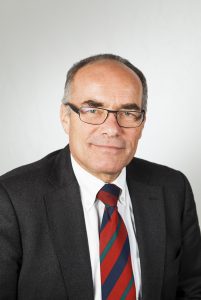Editorial
The August 2015 edition of Mining Report Glückauf (MRG) was the first in the series to feature an article on “deep-sea mining” and with the growing global demand for metallic raw materials there has been no let-up in the amount of expert interest being shown in these marine mineral resources (MMR) from deep oceanic waters. However, whether subsea minerals should at some point in the foreseeable future be a source of supply for our industrial base is still a matter of great dispute. Many scientists and NGOs have expressed serious doubts about this, particularly on account of the potential environmental impact of deep-sea mining. Any commercial extraction of MMR will therefore require the setting of international standards that lay down the highest requirements in terms of how marine resources are to be managed in a sustainable and ecologically responsible manner. The regulations that are to apply to such operations are currently being drafted by the International Seabed Authority (ISA). Of course other questions, such as the availability of metal resources from land-based sources and their price on the world market, have a significant role to play here too, neither should it be forgotten that there are still a number of technological hurdles to be overcome in this new sector of operations.
German companies and research institutes are also involved in finding answers to all the problems and questions that will arise here. We have therefore decided to make “deep-sea mining” the central theme of this latest edition of MRG and to this effect we have singled out some examples of the research currently under way at several locations, namely the GEOMAR Helmholtz Centre for Ocean Research in Kiel, the RWTH Aachen Institute for Advanced Mining Technologies (AMT) and the Hamburg-based DeepSea Mining Alliance in partnership with BAUER Maschinen GmbH in Schrobenhausen.
Two of the papers in this issue return to the familiar topics of permanent waste repositories and geothermal energy. The first of these articles describes the additional exploration measures under way in the Asse salt dome, east of the existing mine, which are required for the retrieval of the radioactive waste in storage at the Asse salt mine, while the second article examines the possibility of exploiting geothermal energy in a country like Mongolia that, while clearly rich in raw materials, is facing major economic challenges.
While we recognise that the working conditions at industrial sites have a complex impact on the labour force due to factors such as microclimate, noise, dust, vibration and so on, the way in which these influences are mutually dependent on each other is not yet fully understood. This edition’s ISSA Mining section therefore looks at a methodical approach for predicting and reducing the intensity of adverse factors in the working environment. And finally the recurrent subject of “post-mining” describes how remote sensing data are being used for operations being undertaken under the remit of the mining authority of North Rhine-Westphalia.
With my best regards
Dipl.-Ing. Andreas-Peter Sitte
Chief Editor Mining Report Glückauf, Essen
